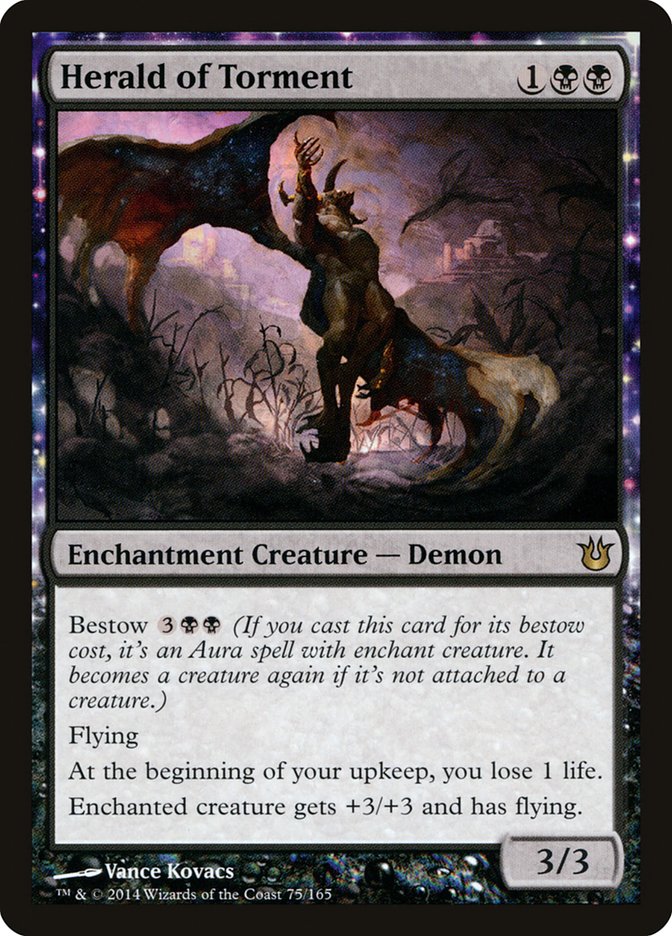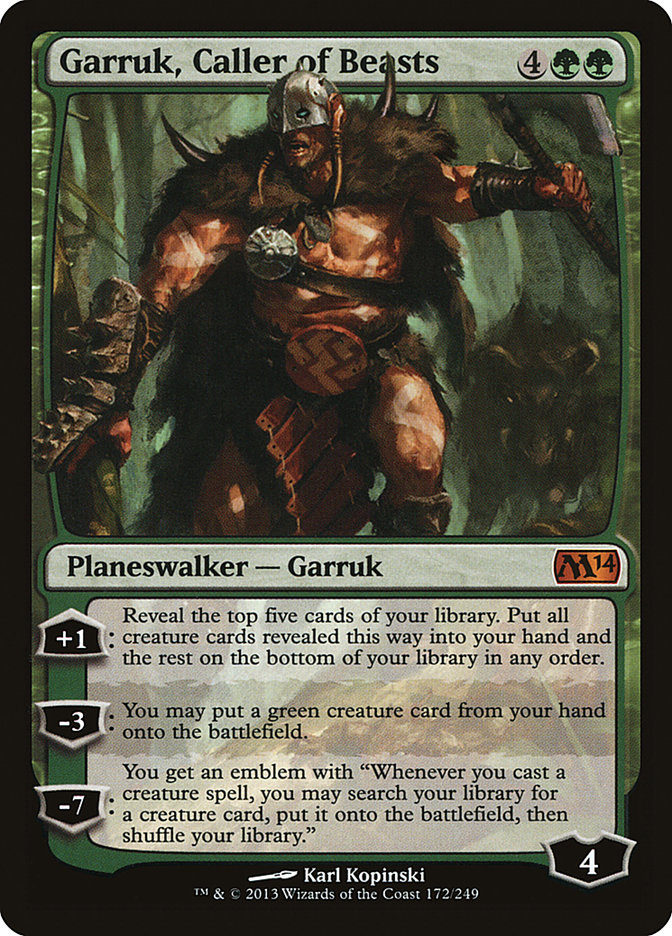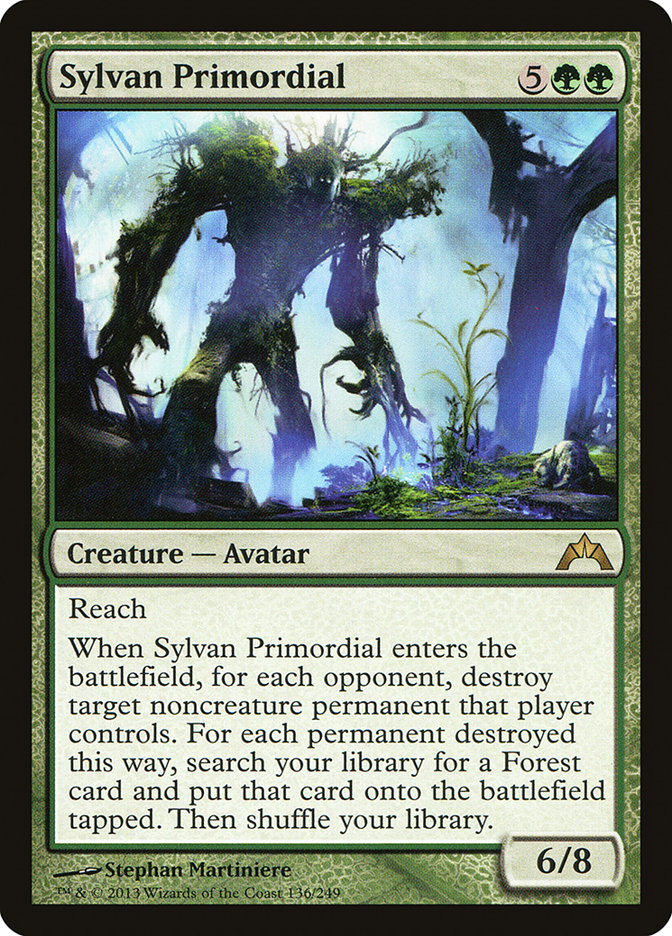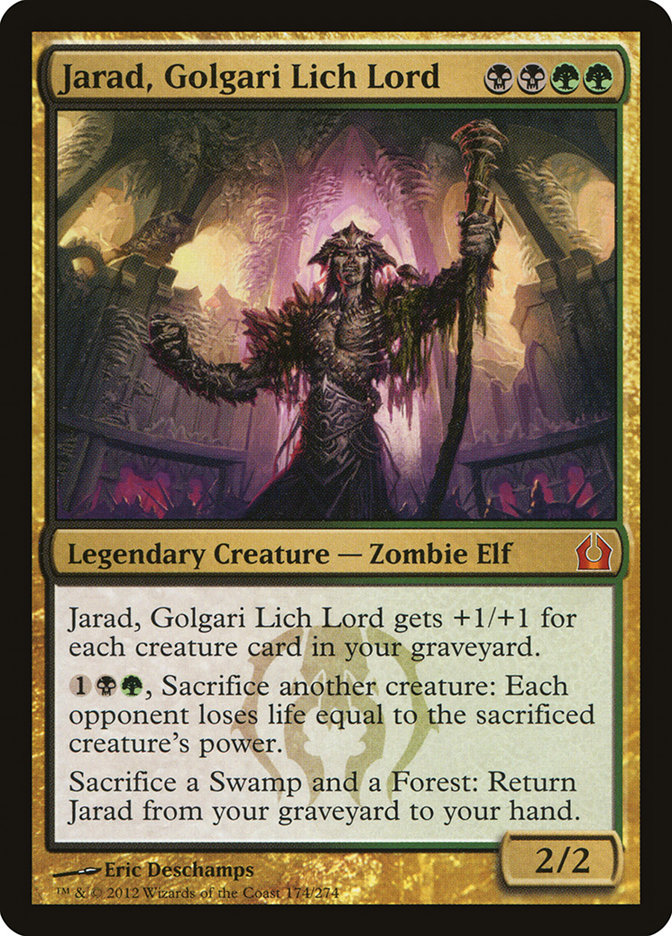This weekend I’ll be playing in Grand Prix Cincinnati, which will be the first opportunity I’ve had to play Standard with Born of the Gods in an actual tournament. Sure, I’ve played in Magic Online Daily Events and two-player queues (lots and lots of two-player queues), but the only Constructed format I’ve had a chance to compete in at any high level so far is Modern. Sadly, the only time the StarCityGames.com Open Series seems to make it out my way is during North American Grand Prix, like with Los Angeles this weekend, so I don’t get to play in big Standard events as much as I’d like.
This weekend is one of those chances, though, so I’ve been preparing like mad. Standard has been quite a volatile format lately, with the metagame not only shifting from week to week but looking completely different on the same weekend depending on what hemisphere you’re in. Last weekend’s Grand Prix in Argentina looked like a callback to the days just after Pro Tour Theros, with Mono-Blue Devotion everywhere. At the Standard Open in the United States, though, Mono-Blue Devotion looked to be washed up, and black decks were the talk of the town. In both cities, however, it was a deck outside the dominant force that hoisted the trophy: Jund Monsters in Buenos Aires and R/W Burn in Seattle.
That’s quite the swath of different decks to try to prepare for, to say nothing the ever-present Esper and U/W Control and fringe players like Naya Hexproof. As always, my plan in an open metagame (or any metagame really) is to try to find something powerful and proactive. So I started brewing, and I brewed up a lot of different decks.
Creatures (28)
- 3 Scavenging Ooze
- 3 Dreg Mangler
- 4 Lotleth Troll
- 4 Desecration Demon
- 2 Varolz, the Scar-Striped
- 4 Elvish Mystic
- 4 Boon Satyr
- 4 Herald of Torment
Lands (23)
Spells (9)
Sideboard

Seeing the success of some of the aggressive black decks got me thinking about my old G/B Aggro deck from a few months back. One of the problems the deck had back then was difficulty breaking through a stalled board against something like Mono-Blue Devotion because so many of its creatures weren’t big enough to attack past a Frostburn Weird and were tethered to the ground. Not so anymore with the introduction of Herald of Torment!
The combination of Herald of Torment and Boon Satyr gives this deck a lot more power than it appears at first glance. Even with a curve that ends at Desecration Demon, the combination of the bestow creatures; Varolz, the Scar-Striped; and Lotleth Troll can allow you to punch past creatures much bigger than anything you have in your own deck.
I’ve actually considered lowering the curve even further and just cutting Desecration Demon entirely for more cheap creatures like Experiment One and Pain Seer or adding something like Mogis’s Marauder to help push damage through in stalemate situations. Marauder is unfortunately not very good with multicolored creatures, though, since the fact that Dreg Mangler is green in addition to black means that it can be stopped by something like Courser of Kruphix even if it has intimidate.
One of the major tensions of any aggressive deck is having the appropriate mix of threats and removal to help push your threats through. This deck plays only a pair of Abrupt Decay and two copies of Hero’s Downfall as actual removal, though Thoughtseize can break up your opponent’s curve to let you keep hitting. Bow of Nylea is nice to let your creatures threaten to trade up on offense thanks to deathtouch and can also turn an otherwise insignificant Elvish Mystic into a meaningful threat by piling on +1/+1 counters. The utility against burn decks is just gravy.
The biggest problem with this deck is the mana base. It’s hard for a deck that wants to come out of the gates swinging to play a lot of lands that enter the battlefield tapped, yet this deck wants a lot of mana of both colors. Sylvan Caryatid is an option for decks with higher impact and higher cost spells that want to fix their mana, but it’s not really the sort of thing we can make much use of here.
I like a lot of what’s going on in this deck and played it a bunch on Magic Online to try to get it to work, but it never quite gelled for me so I ended up putting it aside.
Creatures (28)
- 2 Scavenging Ooze
- 4 Dreg Mangler
- 4 Lotleth Troll
- 3 Experiment One
- 2 Gyre Sage
- 2 Varolz, the Scar-Striped
- 3 Elvish Mystic
- 4 Boon Satyr
- 4 Herald of Torment
Lands (23)
Spells (9)
Sideboard

This was the next evolution, which has a lower curve and more focus on early aggression. Gyre Sage was actually pretty impressive here, with so many ways to evolve it to a decent size. It did a reasonable Tarmogoyf impression much of the time and even helped generate extra mana to bestow Boon Satyr and Herald of Torment from time to time. (As an aside, every time I think of that card’s name, it briefly registers as "Harold of Torment," like some cross between a torturer and a law clerk, and I laugh inwardly.) The combination of Gyre Sage and Bow of Nylea is also quite cute, though there isn’t all that much to do with boatloads of mana.
This deck suffered from many of the same problems as the previous version, with colored mana issues giving it a lot of trouble, and even more than the version with Desecration Demon, it had issues falling behind in creature quality against decks like G/R Monsters. The deck was great against control when the mana worked, but 3/3s for three aren’t really where you want to be against 5/5s for four. Nor are cards that deal damage to you during your upkeep every turn really the best way to try to defend yourself against burn decks.
Creatures (23)
- 3 Sylvan Primordial
- 4 Elvish Mystic
- 4 Polukranos, World Eater
- 4 Sylvan Caryatid
- 4 Kiora's Follower
- 4 Courser of Kruphix
Planeswalkers (9)
Lands (24)

This deck is . . . ambitious. I actually built another BUG Walkers deck before this one, with aspirations of using Ashiok, Nightmare Weaver and Kiora, the Crashing Wave to protect both myself and one another and a plethora of cheap removal to assist in the cause. That deck didn’t feel like it had quite enough punch to it, as my planeswalkers kept dying to things like Stormbreath Dragon and I kept dying to aggressive decks before I could do anything meaningful.
This deck tried to solve those problems by going much bigger and including about as much ramp as I could get my hands on. Looking back at it, I’m not entirely sure why the deck ended up splashing black since it probably would have been better served sticking to two colors and avoiding taking four or more damage each game from shock lands. I had the idea in my head that Far // Away was really good and wanted Vraska the Unseen as another planeswalker to ramp into against control and midrange decks, but ultimately it just wasn’t worth the cost.
What I did learn from this deck is how powerful Garruk, Caller of Beasts can be. The biggest of Garruks hasn’t seen a ton of play in Standard since green devotion decks died down, and it’s not really surprising. Creature-based ramp decks are one of the worst kinds of decks you can play in a world full of Thoughtseize and Hero’s Downfall since your plan relies so heavily on piecing together both your acceleration and your big spells and those cards are great at ensuring that you never get to play with the toys you want to use together.
I came to the realization that Garruk could be exactly what I was looking for in my G/B Midrange deck. One of the problems I was having with the deck is that it could jockey for position for a while in a game, come out ahead, and then end up just drawing a few too many lands and losing. While that can obviously happen to any deck, it was a particularly common occurrence with my Golgari deck because of the way the deck was built. The curve topped out at Vraska, which while powerful isn’t the kind of card that can close out a game once you get there. The vast majority of the time, Vraska just provides you with one or two Vindicate effects and then gets wiped off the board—hardly the kind of card that can close out a game.
But Garruk? Garruk can drink coffee because he’s a closer.
Creatures (22)
- 3 Scavenging Ooze
- 2 Sylvan Primordial
- 2 Elvish Mystic
- 3 Polukranos, World Eater
- 4 Sylvan Caryatid
- 4 Reaper of the Wilds
- 4 Courser of Kruphix
Planeswalkers (3)
Lands (24)
Spells (11)

This deck may be a little bit top heavy, but I like what’s going on here. It might be the best Courser of Kruphix deck around because it makes great use of both the life and free lands it provides to survive into the late game, when Garruk can start calling up his friends to join the party. It’s also one of the best Scavenging Ooze decks in Standard since you actually have the discard and removal spells to get creatures in the yard to grow it to a meaningful size early in the game.
And Sylvan Primordial? That card is so powerful that it had to be banned (sure, the format was Commander, but still)! I actually expected Sylvan Primordial to be far too slow and clunky to be a viable inclusion in a deck that isn’t jam packed with ramp, but it’s actually a totally reasonable creature that adds a completely different dimension to the deck, giving you a powerful answer to everything from planeswalkers to lands enchanted by Underworld Connections. Oh, and a 6/8 reach body happens to go toe to toe with pretty much everything in the format.
The real star here though is Garruk, Caller of Beasts. As I mentioned earlier, one of the biggest problems I had with my old Golgari deck was the fact that the game could just slip away if it went on too long and my draws were just a little below par. Even if Garruk dies immediately, he can often give you a massive burst of resources before he goes, and if he sticks around for a few turns, it’s incredibly difficult for you to lose. I’ve had quite a few games online in which I’ve protected a Garruk long enough for him to ultimate, and let me tell you that is quite the enjoyable experience.
I’m not sure if this deck quite has what it takes, but it has potential at least. I’m going to be working on it more.
Last but not least:
Creatures (31)
- 2 Jarad, Golgari Lich Lord
- 4 Lotleth Troll
- 2 Deathrite Shaman
- 3 Elvish Mystic
- 2 Shadowborn Demon
- 3 Sylvan Caryatid
- 4 Nighthowler
- 4 Nemesis of Mortals
- 3 Herald of Torment
- 4 Satyr Wayfinder
Lands (20)
Spells (9)
Sideboard

I can’t take credit for this deck, as it showed up in the Top 16 of Grand Prix Buenos Aires. It’s very similar to the one that Conley Woods has been working on for a while. The big gain from Born of the Gods is Satyr Wayfinder, which offers a creature-based way to actually get creatures into your graveyard. When I was experimenting with Splinterfright back when Innistrad was in Standard, it was difficult to find the right balance of graveyard enablers and payoff cards, especially since so many of the enablers were spells that didn’t count toward your Splinterfright and Boneyard Wurm.
That’s precisely what makes Satyr Wayfinder such a big deal. It’s an enabler for filling your graveyard with creatures that you aren’t unhappy to flip from one of your other enablers. While Commune with the Gods and Grisly Salvage are clearly powerful, you can only play so many of them, as each spell you put into the deck to fill your graveyard with creatures makes every other such spell worse by reducing the number of creatures you’re likely to hit. This deck isn’t in quite as dire need of enablers as Splinterfright was since it’s much better equipped to play a relatively normal game with cards like Lotleth Troll and Herald of Torment, but it’s still quite nice to have so many that are of such high quality.
The card that overperformed the most for me in this deck was Jarad, Golgari Lich Lord. I’d played with him before, and he’d never really been that remarkable. But alongside Nighthowler, he’s really something else. You can bestow Nighthowler onto a small creature for a huge bonus, sac that creature, and then sac Nighthowler itself to drain your opponent out from even a very high life total. I actually played a game against this deck online the other day in which my opponent burned me out from over twenty life with this very combination when I was about to win on the following turn.
While I like this deck, I don’t know if I can bring myself to play it. Scavenging Ooze is a real nightmare for you, and it’s very popular in decks like G/R Monsters. I do know that this deck putting up real results makes me all the more likely to play multiple copies of Scavenging Ooze in whatever deck I play, and I have to imagine others out there are thinking similarly.
Anyway, what do you think? Do any of these decks look good to you? What do you think is the deck to play in Standard this weekend?




